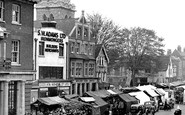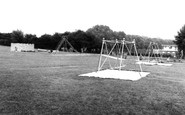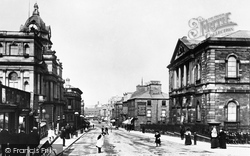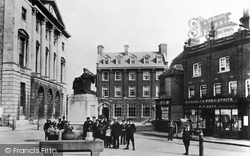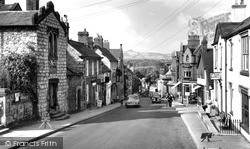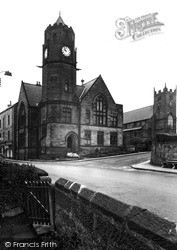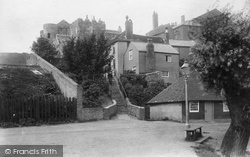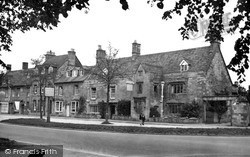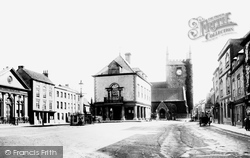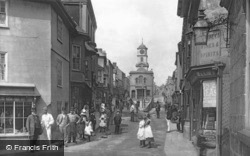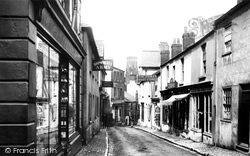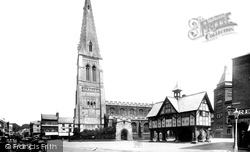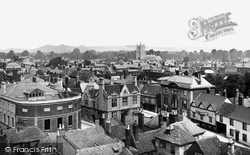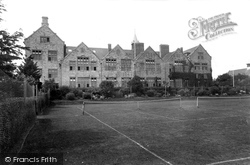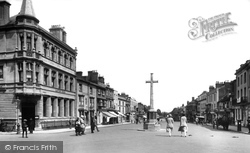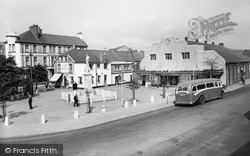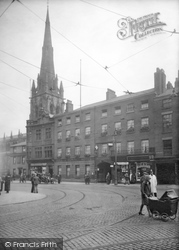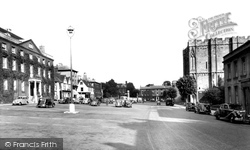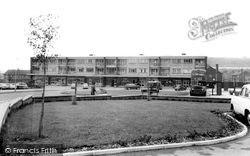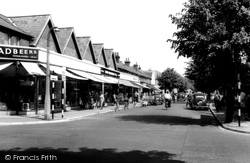Places
26 places found.
Those places high-lighted have photos. All locations may have maps, books and memories.
- Town End, Derbyshire
- Town End, Buckinghamshire
- Town's End, Somerset
- Towns End, Dorset
- Town End, Merseyside
- Town End, Cambridgeshire
- Town's End, Buckinghamshire
- West End Town, Northumberland
- Bolton Town End, Lancashire
- Kearby Town End, Yorkshire
- Town End, Cumbria (near Grange-Over-Sands)
- Town End, Cumbria (near Bowness-On-Windermere)
- Town End, Yorkshire (near Huddersfield)
- Town End, Yorkshire (near Wilberfoss)
- Town End, Cumbria (near Appleby-in-Westmorland)
- Town's End, Dorset (near Melbury Osmond)
- Town's End, Dorset (near Swanage)
- Town End, Cumbria (near Ambleside)
- Town End, Cumbria (near Lakeside)
- Town End, Cumbria (near Kirkby Lonsdale)
- Town End, Cumbria (near Ambleside)
- Town's End, Dorset (near Bere Regis)
- West-end Town, South Glamorgan
- Townend, Derbyshire
- Townend, Strathclyde (near Dumbarton)
- Townend, Staffordshire (near Stone)
Photos
26 photos found. Showing results 1,241 to 26.
Maps
195 maps found.
Books
160 books found. Showing results 1,489 to 1,512.
Memories
3,719 memories found. Showing results 621 to 630.
Brian Connatty
My dad lived in Weymouth for several years. His father worked for a dairy and later ran a kind of dairy shop in the town. The family were based at Chickerell Road. I would love to hear from anyone who remembers him. gconnatty@gmail.com
A memory of Weymouth by
When I Was A Young Girl
I was born in a quaint village in Nottinghamshire called Huthwaite, we moved to a farmhouse in Wrawby when I was 7. My aunt and her family moved there with us. We had great times in the barns, sliding down the hay, watching the ...Read more
A memory of Wrawby in 1965 by
Early Childhood In Romford
I was born in 1953 and lived for the first 3 years in an old house in Junction Road (Number 8) with my parents and Mum's mum (Granny). The back garden of the house seemed to be a jungle and had its end boundary with ...Read more
A memory of Romford by
The Fire And Before
I was a child at Avondale College at the top of Wilbury Road in 1955 and was 'made' to perform The Teddy Bear's Picnic as a teddy bear (I can still smell the costume!) on the stage of the old Town Hall. In around 1959, I attended a ...Read more
A memory of Hove by
Brazies Of Rye
My ancestors are the Braziers from Rye and were coal merchants and wool staplers. We often visit the town especially around Landgate where they once lived. Many Braziers are buried in the All Saints and St Mary's Parish Church and I wonder if any Braziers still live in the town?
A memory of Rye by
Shops And Shopping
I remember spending my pocket money in Adcocks and Percivals, at the top of Duke Street. He had a terrific range of toys for a small town shop, from toy soldiers to model railways. He had a working model railway set up ...Read more
A memory of Princes Risborough
Happy Times In Firbeck
My memories of Firbeck are wonderful and I share them with many people. I lived there for around 8 years and my Dad was the village policeman so we lived in the then policehouse near the top of the village. We used to wait by ...Read more
A memory of Firbeck in 1960 by
My Beginning
I returned to Andover in August 2010 and was as excited as the day we left in November 1956 when my family decided we were going to Australia. 54 years is a long time and I think that my wife was surprised at how much I remembered ...Read more
A memory of Andover in 1956 by
Young Corby, Once Called Corbie.
This photo must have been taken early in the morning because that play area was always packed with wee yins in the 1960s. I know because I was one of them. There were lots of what I used to call swing parks in Corby in ...Read more
A memory of Corby by
Ernest Roy Spencer
My dad often told me about Shifnal, his dad had two pubs there, and his sisters Norma and Winnie lived there. I can remember going to my cousin Mavis's wedding in the beautiful church there and spending time looking round the ...Read more
A memory of Shifnal by
Captions
5,111 captions found. Showing results 1,489 to 1,512.
Burnley means 'the place by the river Brun'; the town snuggles in a valley between the rivers Calder and Brun.
As late as 1870, enclosure meadowland and hawthorn hedges stretched away from Wigston, but the ensuing period up to 1900 was to see a trebling of population figures as hosiers and boot and shoe manufacturers
In the terms of his will, however, he left instructions that his estate - which now consisted of Moulsham and Chelmsford - should remain in one piece as it passed to his successive male heirs.
This small city with a population of 3,600 and the smallest cathedral in Britain has an important place in the history of Wales.
The distinctive town hall of Loftus was built by Lord Zetland in 1879 and described as 'Free-Neo-Tudor' with a polygon angled tower.
Built in 1249 to defend the town from French raids, by the late 14th century the castle was used by the town corporation before being sold in 1430 to one John de Ypres; it was bought back by the corporation
Moreton was a market town for the woollen industry in centuries past, and it was also an important centre for the linen weaving industry and a coaching town in the days of horse-drawn travel
Wallingford's imposing 17th-century Town Hall dominates this Victorian photograph.
Until the commercial growth of towns such as Yeovil and Bridport, Beaminster was an important town for neighbouring villages.
This ancient borough and market town is most famous for its fine-grained granite, which was used in the construction of Waterloo Bridge.
The Shipwright's Arms on the left is still open for business, and its name gives an indication of one of the old trades in town - until the late years of Victoria's reign the town's main industry was the
The classic market-town juxtaposition of church and grammar school create an ideal composition.
Albert Park was opened by Prince Arthur, Duke of Connaught, in 1868, and the land was purchased for the town by Henry Bolckow.
The Cranford Hotel on the outskirts of the town began its existence as the Half Way House; it was transformed from a humbler inn to cater for the increase in visitors to the resort and the
Gothic, Jacobean, classical and domestic architecture testify to the history of the town's development. Note the attractive, almost Flemish gabling of the building in the centre of the picture.
Sherborne is famous for its public schools, and on most days in term time pupils can be seen threading their way around the old town.
The Red Horse Hotel is where Washington Irving penned his paper on the town.
It is still at the heart of the town, but now it has a black metal surround erected by the Town Council.
It is still at the heart of the town, but now it has a black metal surround erected by the Town Council.
Preston was always a town that you had to pass through to go north to south, but as the popularity of Blackpool increased, so did the traffic east to west.
The gateway to the Abbey and the commercial edge of the secular town face each other across Angel Hill.
This photograph (and D69029) show the impact of 1960s development and the architectural mores that governed the town.
This railway town was some two miles north of the original village of Old Woking. The London to Southampton railway arrived in 1838, and 'new' Woking began to develop.
Modern Eastleigh is a grid pattern of late 19th-century and early 20th-century streets, with typical suburban fringes stretching out towards Southampton and Winchester.
Places (26)
Photos (26)
Memories (3719)
Books (160)
Maps (195)



